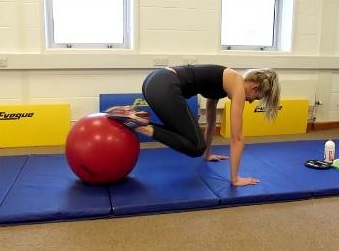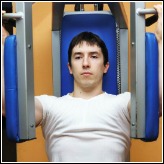Great Core Muscle Training Exercises
Core muscle training principles follow the same process as all other physical development programs. And like all the muscles in your body if you want your core muscles to become stronger, you will need to train them.

Adaptations to physical training is specific, by that I mean that if the targeted muscle is expected to work for long periods of time without rest then they have to be trained in a way which satisfies these needs. Similarly, if the muscles are ones which produce movements, then they have to be trained with the involvement of movements.
Core Muscle Training for Spine Stabilization
The core muscles which stabilize your spine (referred to as local stabilizing muscles) are endurance muscles. These muscles are designed to switch on and stay that way for long periods of time. However they can - and do - become inactive for a variety of reasons and once they switch off, they can remain that way. If you have lower back pain, then you know the consequence of this. As core muscle training goes, these deep muscles are notoriously difficult to isolate and then recruited for exercise purposes. Regardless, these deep muscles must be activated and exercised to bring out their endurance qualities.
A good exercise for the muscles responsible for the stabilization of the spine is the following seated Swiss ball exercise. Before you begin, you should read the Swiss ball guidelines here…
Seated Bounce
- Sit on a Swiss ball, ensuring that there is equal pressure on both sides of your pelvis;
- Feet and knees should be shoulder width apart and placed firmly on the floor;
- Sit upright with your spine held in a neutral position;
- Raise both arms above your head. As you do so you should feel your stomach pull inwards (as in the greyhound exercise);
- Without losing contact with the surface of the ball and with small amplitude, begin to bounce on the ball;
- Bounce on the ball for a count of 30 seconds and rest for 1 minute;
- Repeat this 6 times.
The light bounces increase the effect of gravity on your body and stimulate the small muscles close to your spine. A word of caution, if you land with pelvis tipped slightly forward or backward, your back extensors or your hip flexors will be activated to perform the stabilizing action. This is not what we want, so take care with this exercise.
Core Muscle Training for Global Stabilizers
The second level group of muscles adds to the stabilization of the spine and the trunk. Due to their longer line of pull (when compared to the very deep musculature), these muscles are also movement producers, because of this they are referred to as global stabilizers (opposed to local stabilizers).
These muscles support the deep stabilizing muscles of the spine and can also produce movement around the trunk. When the deeper muscles in your core are not activated properly, it is these global stabilizing muscles that take up the strain (not particularly effectively I might add). These muscles should be exercised using isometric (static) contractions as well as isotonic (concentric/eccentric) contractions.
The following core muscle training exercise is a good example of the type of workout that is required to exercise these muscle groups effectively.
Bridge Twist
- Lie face down on the floor and support yourself on your forearms and toes;
- Achieve and maintain a straight line with your body from your head to your toe, no sagging or piking of your hips;
- Supporting yourself on one forearm, raise the other arm from the floor and rotate your shoulders and arm away and up as far as you can take it without losing form;
- Return slowly back to the floor;
- Repeat the action on the opposite side of your body;
- The rotating action should be repeated 5 times each side.
A precursor to the above exercise is your normal everyday forward bridge and side raise/plank. You should become proficient at these before taking on the bridge twist exercise. So there you have it, another two exercises to add to your armoury of core muscle training exercises.
Sign Up For The Latest Track And Field News And Improve Your Athletic Performance!
Learn more about Core Training.







